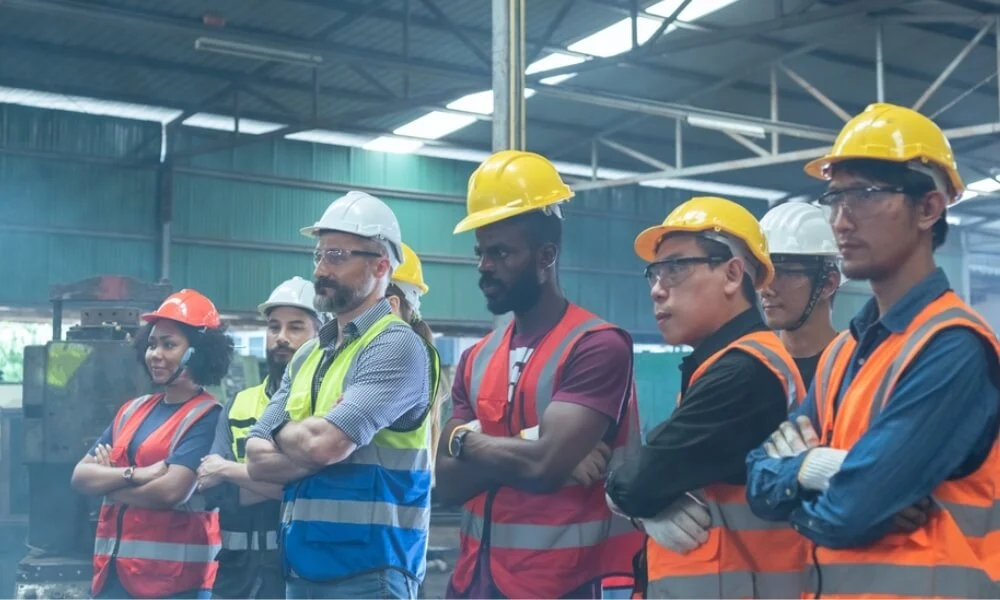Maintaining a safe and healthy working environment is essential and often mandated by law in the ever-evolving and dynamic business world. Specialist training is crucial to ensuring this safety, which equips employees with the specific skills and knowledge they need to perform their roles safely and effectively. But what exactly is specialist training, particularly in safety, and when is it necessary?
In this blog, we’ll delve into the world of specialist safety training, exploring its significance, its components, and the situations when this particular training becomes essential. Whether you’re an employer, a manager, or an employee aiming to broaden your understanding of workplace safety, this guide will provide insights and answers to navigate the complex landscape of safety specialist training. Let’s begin.
What is Specialist Training?
Specialist training refers to the specific, often advanced, instruction or education individuals receive to excel in a particular role or to safely and effectively perform certain activities. This type of training goes beyond general or foundational knowledge, delving into the details and nuances of a specific task, operation, or equipment.

Importance of Specialist Training:
Specialist training in health and safety plays a crucial role in promoting and maintaining safe and healthy working environments. Here are some key reasons highlighting the importance of specialist training in health and safety:
- Ensures Competence: Specialist training ensures employees are capable and competent to undertake their roles and responsibilities, especially when the tasks are complex or require a high skill level.
- Promotes Safety: For industries or tasks with inherent risks (such as the operation of heavy machinery, hazardous materials handling, or first aid), specialist training is essential to ensure the safety and well-being of all involved. It reduces the risk of accidents or incidents that can lead to injuries, fatalities, or significant financial loss.
- Compliance with Regulations: Many industries are regulated by laws and standards that require certain types of specialist training. Therefore, it is necessary for compliance and to avoid legal issues.
- Increases Efficiency: With the right training, employees can perform their tasks more efficiently and effectively, improving overall productivity and the quality of work.
- Boosts Confidence: Specialist training equips individuals with the confidence to perform their duties to the best of their abilities. It can also increase job satisfaction and morale.
- Adapts to Change: As industries and technologies evolve, so do the skills required to succeed. Specialist training helps employees adapt to these changes, whether they’re new procedures, tools, or regulations.
- Reduces Supervisory Overhead: Well-trained employees require less constant supervision and management, freeing up resources for other aspects of the business.

Topics Included In Specialist Training
Specialist training can span a broad spectrum of subjects, depending on the industry, role, and specific requirements of a job or task. Here are some examples of topics that may be included in specialist training:
- Health and Safety: This is a key component of specialist training across all industries and may include topics like fire safety, first aid, manual handling, ergonomics, and personal protective equipment (PPE).
- Equipment Operation: Training in using specific equipment or machinery, such as forklifts, cranes, manufacturing equipment, lab apparatus, etc.
- Software and Technology: This could involve learning a specific software package or technical platform, such as CAD software for engineers, specific medical software for healthcare professionals, or data analysis tools for researchers.
- Regulatory Compliance: In certain industries, specialist training may involve understanding and complying with specific regulations or standards, such as HIPAA for healthcare, GDPR for data protection, or OSHA standards for various industries.
- Specialized Skills: These could be anything from negotiation skills for sales personnel, surgical procedures for medical professionals, data analysis for statisticians, or customer service skills for client-facing roles.
- Emergency Procedures: Training in responding to emergency situations, like data breaches, chemical spills, or other potential crises.
- Quality Control: Training on the specific procedures and practices to maintain the quality of products or services.
- Environmental Awareness: In industries that interact heavily with the environment, specialist training may involve understanding the environmental impact and how to minimize it.
- Project Management: In many roles, specialist training might involve learning methodologies for managing projects, such as Agile, Scrum, or Prince2.
- Industry-Specific Knowledge: Some roles may require an in-depth understanding of a particular industry’s specifics, such as energy, pharmaceuticals, finance, etc.
Remember, the specific topics covered in specialist training will vary greatly depending on the role, the industry, and the organization. The ultimate goal is to equip individuals with the knowledge and skills to perform their duties effectively and safely.

When Specialist Training Is Required?
Specialist training is required in several situations, including but not limited to the following:
- New Hires: Whenever new employees are brought into an organization, they will need specialist training to familiarize them with their specific roles and responsibilities, including any special equipment, procedures, or standards they’ll be working with.
- Role Change or Promotion: When an employee moves into a new role or is promoted to a more specialized position, they’ll typically need additional specialist training relevant to their new responsibilities.
- Introduction of New Tools, Equipment, or Procedures: When a company introduces new machinery, software, procedures, or other tools, employees using these new resources need specialist training to understand their functions and use them correctly and safely.
- Changes in Regulations or Standards: When new industry regulations or standards are implemented, employees often require updated training to ensure they understand and can comply with these changes.
- Post-Accident or Incident: A workplace accident or near miss may highlight a need for further specialist training. This training could help prevent similar incidents from happening in the future by addressing the gaps in knowledge or skills that may have contributed to the initial incident.
- Regular Refresher Courses: Even for employees who have been in their roles for some time, regular refresher training can be important to ensure their skills stay up to date and they continue to follow best practices.
- Specific Risk Factors: If a job involves specific health and safety risks (for instance, handling hazardous materials or operating heavy machinery), specialist training will be necessary to ensure those tasks are performed safely.
- In Response to Performance Evaluation: If an employee’s performance evaluation reveals weaknesses in certain areas, specialist training can help them improve those skills and better perform their role.
Remember, these are only general guidelines. The need for specialist training can vary widely depending on the specific industry, job, and individual circumstances. Employers must monitor their employees’ skills and knowledge and ensure they’re provided with the necessary training as and when needed.
Conclusion
In conclusion, specialist training, particularly in safety, is critical to maintaining a healthy, safe, and efficient working environment. This type of training focuses on specific skills or knowledge essential for an individual’s role and is crucial in ensuring competence, promoting safety, increasing productivity, and meeting regulatory requirements. It becomes necessary in various situations, including when new hires join the team, when roles change, when new tools or regulations are introduced, after accidents or near misses, for regular refresher courses, and in response to performance evaluations.
Ultimately, specialist training is a powerful tool organizations must leverage to keep their employees informed, confident, and prepared for their specific roles, fostering a safer and more productive workplace.

